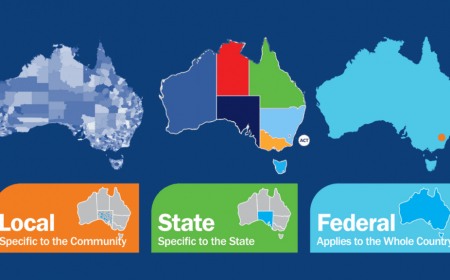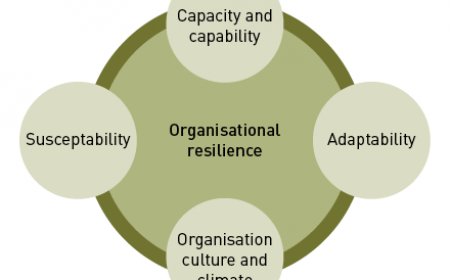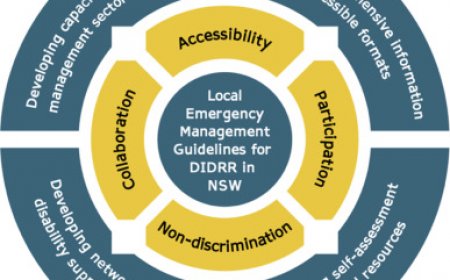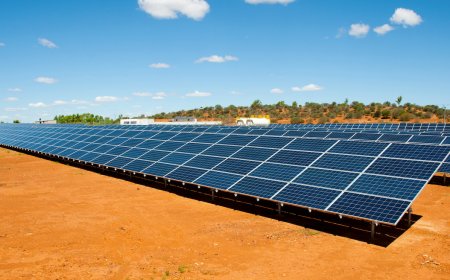Australia Home Insurance: What You Need to Know
Learn everything you need to know about Australia home insurance, including coverage options, factors affecting premiums, and tips for choosing the right policy. Protect your property today!
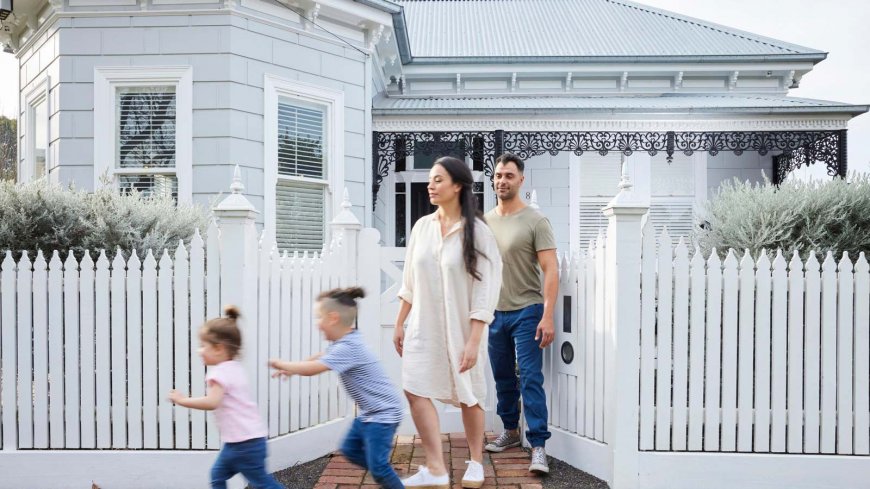
Home insurance is a crucial safeguard for homeowners and renters in Australia, protecting their properties from unforeseen events like natural disasters, theft, and accidents. With the increasing frequency of extreme weather events and rising property values, understanding home insurance has never been more important. This comprehensive guide will walk you through everything you need to know about Australia home insurance , including coverage options, factors affecting premiums, tips for choosing the right policy, and answers to frequently asked questions.
Why Home Insurance is Essential in Australia
Australia’s diverse climate—ranging from tropical cyclones in the north to bushfires in the south—makes homes vulnerable to a variety of risks. According to the Insurance Council of Australia (ICA) , natural disasters alone cost insurers over $5 billion annually . Without adequate home insurance, repairing or rebuilding your property after such events could lead to financial ruin.
Key Benefits of Home Insurance
- Financial Protection: Covers repair or replacement costs for your home and belongings.
- Peace of Mind: Ensures you’re prepared for unexpected events like fires, storms, or theft.
- Legal Compliance: Some lenders require home insurance as a condition of mortgage approval.
- Customizable Coverage: Policies can be tailored to suit your specific needs, whether you own or rent.
"Home insurance isn’t just a safety net—it’s an investment in your financial security."
Types of Home Insurance in Australia
There are several types of home insurance policies available, each designed to address different needs. Understanding these options will help you choose the best coverage for your situation.
1. Building Insurance
Building insurance covers the structure of your home, including walls, roofs, floors, and permanent fixtures like plumbing and electrical systems. It’s essential for homeowners, especially those with mortgages, as it protects the physical structure of the property.
- Who Needs It? Homeowners, landlords.
- What’s Covered? Damage from fire, storms, floods (if included), vandalism, and accidental damage.
- Average Cost: $800–$1,500 annually, depending on location and property value.
Why Is Building Insurance Important?
If your home is damaged by a covered event, building insurance ensures that you won’t have to bear the full cost of repairs or reconstruction. For example, if a severe storm damages your roof, this policy will cover the repair expenses, preventing financial strain.
2. Contents Insurance
Contents insurance protects your personal belongings inside the home, such as furniture, electronics, clothing, and appliances. It’s ideal for renters and homeowners who want to safeguard their possessions.
- Who Needs It? Renters, homeowners.
- What’s Covered? Theft, accidental damage, loss due to fire or natural disasters.
- Average Cost: $300–$700 annually, based on the value of insured items.
How Does Contents Insurance Work?
Imagine returning home to find your laptop stolen or your television damaged in a fire. Contents insurance reimburses you for the value of these items, allowing you to replace them without dipping into your savings.
3. Combined Home and Contents Insurance
This policy bundles building and contents insurance into a single package, offering comprehensive protection for both the structure and its contents. It’s often more cost-effective than purchasing separate policies.
- Who Needs It? Homeowners looking for all-in-one coverage.
- What’s Covered? Structural damage, personal belongings, liability claims.
- Average Cost: $1,200–$2,500 annually.
Advantages of Combined Policies
Combined policies simplify the claims process and often come with discounts. For instance, if a storm damages both your roof (building) and your furniture (contents), you only need to file one claim instead of two.
4. Landlord Insurance
Landlord insurance is designed for property investors and covers risks associated with renting out a property. It typically includes building coverage, loss of rental income, and liability protection.
- Who Needs It? Property investors, landlords.
- What’s Covered? Tenant-related damages, unpaid rent, legal disputes.
- Average Cost: $600–$1,200 annually.
Unique Features of Landlord Insurance
Unlike standard home insurance, landlord policies address tenant-specific risks. For example, if a tenant accidentally starts a fire or fails to pay rent, landlord insurance provides financial relief.
5. Flood Insurance
Flood insurance is often sold as an add-on to standard policies, especially in flood-prone areas. Given Australia’s susceptibility to flooding, this coverage is highly recommended for at-risk regions.
- Who Needs It? Homeowners in flood zones.
- What’s Covered? Water damage caused by overflowing rivers, heavy rain, or storm surges.
- Average Cost: Varies significantly based on location and risk level.
Why Is Flood Insurance Critical?
Standard home insurance rarely covers flood damage. In 2022, floods in Queensland and New South Wales resulted in billions of dollars in damages, highlighting the importance of this add-on.
Factors Affecting Home Insurance Premiums
Several factors influence the cost of home insurance in Australia. Understanding these variables can help you find affordable coverage without compromising on quality.
1. Location
Where your property is located plays a significant role in determining premiums. Homes in high-risk areas prone to bushfires, floods, or cyclones typically incur higher costs.
Impact of Location
For example, properties near coastal areas may face higher premiums due to increased cyclone risk, while inland homes might see elevated rates because of bushfire threats.
2. Property Value
The replacement cost of your home and the value of your belongings directly impact premiums. Insurers assess the cost of rebuilding or repairing your property when calculating rates.
Assessing Property Value
Underestimating your property’s value can lead to underinsurance, leaving you responsible for additional costs during a claim. Use online calculators or consult a professional valuer for accurate estimates.
3. Construction Type
Homes built with fire-resistant materials like brick or concrete may qualify for lower premiums compared to timber-framed structures, which are more susceptible to fire damage.
Construction and Risk
Modern homes with reinforced foundations and storm-resistant designs often receive discounted rates. Conversely, older homes may require higher premiums due to outdated wiring or plumbing.
4. Security Features
Installing security measures such as alarms, CCTV cameras, and deadbolts can reduce premiums by lowering the risk of theft or vandalism.
Enhancing Home Security
Investing in smart home technology, such as connected smoke detectors and water leak sensors, not only improves safety but also qualifies you for additional discounts.
5. Claims History
A history of frequent claims may result in higher premiums, as insurers perceive you as a higher-risk customer.
Managing Claims History
While filing claims is sometimes unavoidable, maintaining a clean record by avoiding unnecessary claims can keep your premiums low.
6. Excess Amount
The excess (the amount you pay out-of-pocket before the insurer covers the rest) affects your premium. Opting for a higher excess can lower your annual cost but increases your financial responsibility during a claim.
Choosing the Right Excess
Select an excess amount you can comfortably afford in case of a claim. For example, opting for a $1,000 excess instead of $500 could save you hundreds of dollars annually.
What’s Typically Covered Under Home Insurance?
While coverage varies by policy, most home insurance plans include the following:
1. Natural Disasters
Policies often cover damage caused by storms, hail, lightning, and bushfires. However, flood coverage usually requires an additional rider.
Examples of Natural Disaster Coverage
If a bushfire destroys part of your home, your policy will cover the repair costs. Similarly, hail damage to your roof would also be included.
2. Theft and Vandalism
Losses resulting from burglary, theft, or malicious damage are generally covered under contents insurance.
Protecting Against Theft
For instance, if burglars break into your home and steal electronics, your contents insurance will reimburse you for the stolen items.
3. Accidental Damage
This includes unintentional harm to your property or belongings, such as broken windows or water leaks.
Accidental Damage Scenarios
Dropping a vase and shattering it or accidentally spilling red wine on your carpet are examples of incidents covered under accidental damage clauses.
4. Liability Protection
If someone is injured on your property or you accidentally damage someone else’s property, liability coverage helps pay for legal fees and compensation.
Liability Coverage in Action
Suppose a delivery person slips on your wet floor and sustains an injury. Your liability coverage would handle medical expenses and potential legal costs.
5. Temporary Accommodation
If your home becomes uninhabitable due to a covered event, many policies reimburse temporary living expenses while repairs are underway.
Temporary Accommodation Benefits
For example, if a fire forces you to stay in a hotel for two weeks, your policy will cover accommodation and meal costs during that period.
What’s Not Covered?
It’s equally important to understand exclusions to avoid surprises during claims. Common exclusions include:
- Wear and Tear: Gradual deterioration of property components.
- General Maintenance: Issues arising from lack of upkeep.
- Intentional Damage: Deliberate destruction caused by the policyholder.
- Acts of War: Damage resulting from war or terrorism (unless specified).
- Certain Natural Events: Earthquakes and tsunamis may require separate coverage.
Understanding Exclusions
For example, if your roof collapses due to termite infestation, it likely won’t be covered unless you’ve opted for pest-related coverage.
How to Choose the Right Home Insurance Policy
Selecting the right policy involves careful consideration of your needs, budget, and risk profile. Follow these steps to make an informed decision:
Step 1: Assess Your Needs
Determine whether you need building insurance, contents insurance, or both. Consider the value of your property and belongings.
Evaluating Your Requirements
If you own a home and rent it out, focus on landlord insurance. If you’re a tenant, prioritize contents insurance to protect your personal items.
Step 2: Compare Quotes
Use comparison websites like Canstar, Finder, or iSelect to compare policies from multiple providers. Look beyond price and evaluate coverage details.
Using Comparison Tools
These platforms allow you to filter results based on criteria like coverage type, excess amount, and customer ratings, helping you find the best match.
Step 3: Check Exclusions and Limits
Read the fine print to understand what’s excluded and any limits on payouts for specific items (e.g., jewelry or electronics).
Reviewing Fine Print
Ensure that valuable items like engagement rings or laptops aren’t subject to low payout caps. If necessary, purchase additional coverage for high-value possessions.
Step 4: Review Customer Service Ratings
Choose a provider known for excellent customer service and efficient claims processing. Online reviews and ratings can provide valuable insights.
Importance of Customer Service
A responsive insurer can make a significant difference during stressful situations like filing a claim after a disaster.
Step 5: Consider Add-Ons
Evaluate optional extras like flood cover, portable contents insurance, or pet damage coverage to enhance your policy.
Adding Value to Your Policy
For instance, if you frequently travel with expensive gadgets, portable contents insurance ensures they’re protected even outside your home.
Tips for Reducing Home Insurance Costs
While home insurance is a necessary expense, there are ways to minimize costs without sacrificing coverage:
1. Bundle Policies
Combine home and car insurance with the same provider for discounts.
Bundling Advantages
Many insurers offer multi-policy discounts of up to 15%, making bundling a cost-effective strategy.
2. Increase Your Excess
Opt for a higher excess to lower your premium, provided you can afford the out-of-pocket expense during a claim.
Balancing Excess and Premium
Increasing your excess from $500 to $1,000 might reduce your annual premium by $100–$200, depending on the provider.
3. Improve Home Security
Install smoke detectors, security systems, and locks to qualify for reduced rates.
Security Enhancements
Smart locks and monitored alarm systems not only deter intruders but also signal to insurers that your home is well-protected.
4. Shop Around Annually
Don’t settle for automatic renewals. Compare quotes each year to ensure you’re getting the best deal.
Annual Reviews
Loyalty penalties are common in the insurance industry, where long-term customers may pay more than new ones. Regularly shopping around can save you money.
5. Maintain Your Property
Regular maintenance reduces the likelihood of claims, making you a lower-risk customer.
Preventive Measures
Fixing minor issues like leaking pipes or damaged gutters prevents them from escalating into costly problems.
Comparison Table: Top Home Insurance Providers in Australia
Common Misconceptions About Home Insurance
1. “My Mortgage Lender’s Insurance is Enough”
Mortgage insurance only protects the lender, not your property or belongings. You still need your own home insurance policy.
Clarifying Mortgage Insurance
Lenders require borrowers to insure the loan amount, not the property itself. Separate home insurance ensures your assets are protected.
2. “Renters Don’t Need Insurance”
Even renters should invest in contents insurance to protect their personal belongings and liability.
Renter Risks
Without insurance, renters are personally liable for damages caused to the rental property, such as accidental fires or water leaks.
3. “All Policies Are the Same”
Coverage varies widely between providers. Always read the terms and conditions carefully.
Policy Variations
Some insurers exclude certain perils or impose strict limits on payouts. Comparing policies ensures you get adequate coverage.
Review: Verdict on Australia Home Insurance
Australia home insurance offers peace of mind and financial protection against a wide range of risks. While premiums can be costly, the benefits far outweigh the expenses, especially in a country prone to natural disasters. By understanding your needs, comparing options, and taking proactive steps to reduce costs, you can secure the best possible coverage.
Conclusion
Investing in home insurance is one of the smartest decisions you can make as a homeowner or renter in Australia. It ensures that your property and belongings are protected against unforeseen events, giving you peace of mind and financial stability. Start exploring your options today to find a policy that meets your needs and budget.
Frequently Asked Questions (FAQs)
1. Is home insurance mandatory in Australia?
No, home insurance is not legally required, but it’s highly recommended. Mortgage lenders may require building insurance as a condition of approval.
2. Does home insurance cover floods?
Standard policies typically exclude flood damage. You’ll need to purchase an add-on or standalone flood insurance policy.
3. How do I file a home insurance claim?
Contact your insurer as soon as possible, provide evidence of the damage, and follow their instructions for submitting documentation.
4. Can I insure my rental property?
Yes, landlord insurance is specifically designed for rental properties and covers risks like tenant damage and loss of income.
5. What happens if I underinsure my home?
Underinsurance can leave you responsible for covering the shortfall if repair or replacement costs exceed your policy limit.
6. Are pets covered under home insurance?
Some policies offer optional pet damage coverage, but injuries caused by pets to third parties fall under liability coverage.
7. How often should I review my policy?
Review your policy annually or whenever there’s a significant change, such as renovations or acquiring valuable items.
8. Can I cancel my home insurance policy?
Yes, but cancellation terms vary by provider. Be aware of potential penalties or fees.
9. Does home insurance cover termite damage?
Most policies exclude termite damage unless explicitly stated otherwise. Regular inspections can help prevent infestations.
10. Are portable items covered outside the home?
Portable contents insurance is required to cover items like laptops or jewelry when taken outside the home.
What's Your Reaction?
 Like
0
Like
0
 Dislike
0
Dislike
0
 Love
0
Love
0
 Funny
0
Funny
0
 Angry
0
Angry
0
 Sad
0
Sad
0
 Wow
0
Wow
0



